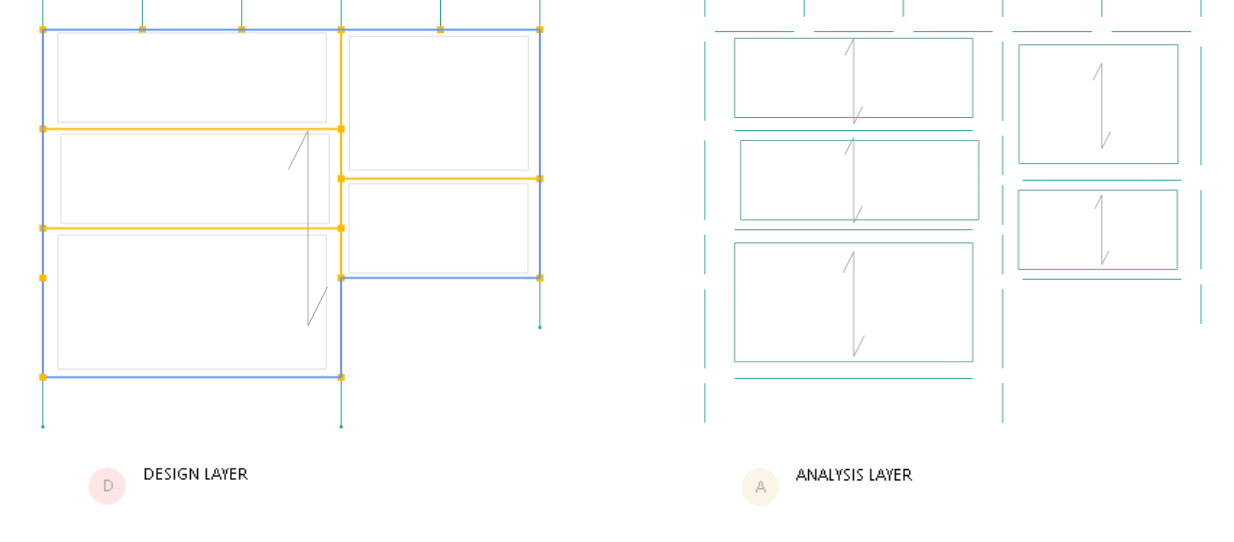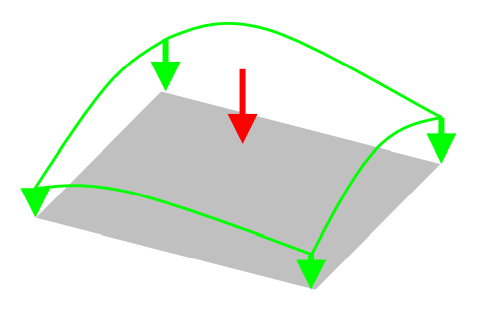Distributing area loads to surrounding 1D entities
In GSA, there are two ways to distribute load from a 2D area to its surrounding 1D elements: by using either load panel elements or grid loads.
This explanation describes both methods.
This approach is applicable, for example, when modelling steel roof framing without including the stiffness of the deck. In such cases, it may be preferable not to model the stiffness of a 2D entity while still needing a method to apply load for distribution to its adjacent 1D entities.
Load panels
Load panel elements
Load panel elements are 2D elements that do not contribute to the stiffness matrix (i.e., these are elements that do not have any stiffness). They can, however, distribute uniform face loads applied to surrounding 1D elements. This is currently the only load type that can be applied to load panel elements.
A load panel element is defined by 3 or more nodes that connect to the nodes of the perimeter 1D elements. Its local x axis determines the load span direction if its one-way spanning.
A load panel element must be assigned a 2D property, which is what determines if it is two-way or one-way spanning (or uses GSA's legacy load panel expansion options).
Load panel elements surrounded by 1D elements
Load panel elements with uniform face loads expanded onto surrounding 1D elements

Note: While load panel elements with a two-way or one-way property can be comprised of any number of nodes greater than 2, the topology of a load panel with a legacy property can only be made up of 3 or 4 nodes.
Visit the references section for more on this topic.
Load panel members
It is possible to create many load panel elements at once by defining a 2D member and setting its 2D analysis type to load panel. When using the Create elements from members tool to generate the analysis elements, it will generate load panel elements to fit within each bay of 1D framing.

Grid loads applied to 1D elements
Grid loading is a type of loading which is applied to a position on a grid surface. It is possible to apply point, line or area loads via grid loading. Loads are distributed to surrounding elements based on the span type.
To distribute loads to surrounding 1D elements, the grid surface must be defined to apply loads to 1D elements. It is possible to choose one-way or two-way span type. When applying uniform area loads to grid surfaces of this type, the load expansion algorithm is identical that of the one-way and two-way load panel elements.
The following shows how the load is distributed if the grid surface is one-way or multi-way spanning.
Note: Distributed load is in equilibrium with applied load.
One-way spanning grid load distribution

Two-way spanning grid load distribution

Visit the Theory tab for more on this topic.